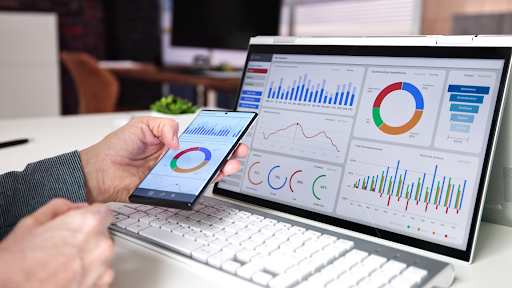Introduction
Monitoring and managing cloud resources efficiently is essential for maintaining performance, reliability, and cost control. Azure dashboards serve as a powerful tool for visualizing, tracking, and analyzing data from various services in a single view. Whether you’re a cloud architect, DevOps engineer, or IT administrator, creating dashboards in Azure helps streamline decision-making and enhance visibility into resource health, performance, and usage metrics.
This article walks you through a comprehensive, step-by-step approach to building dashboards in Azure while emphasizing best practices and real-world applications.
What is Azure Dashboards: Basic Understanding
Azure dashboards are customizable canvases in the Azure portal that display real-time data from your cloud environment. They offer centralized insights across subscriptions and resources, enabling teams to monitor performance, security, and cost metrics efficiently.
A typical Azure dashboard consists of tiles or widgets that display data such as metrics, charts, logs, and key performance indicators. These dashboards can be shared across teams, secured through role-based access control (RBAC), and tailored to specific project or team requirements.
Key Features of Azure Dashboards
- Drag-and-drop interface for ease of use
- Real-time visualization of telemetry and performance data
- Integration with Azure Monitor, Application Insights, and Log Analytics
- Support for Markdown tiles for custom text or documentation
- Configurable access permissions for secure collaboration
Prerequisites for Creating Dashboards in Azure
Before you begin creating dashboards in Azure, ensure the following prerequisites are in place:
- Active Azure Subscription: You must have access to an Azure subscription with appropriate permissions.
- Resource Deployment: Resources such as virtual machines, databases, storage accounts, or applications should already be deployed.
- Permissions: You should have Reader or Contributor roles on the resources you intend to monitor.
- Familiarity with Azure Services: It is beneficial to have a basic understanding of Azure Monitor, Log Analytics, and Resource Graph Explorer.
Additional Prerequisites Based on Dashboard Types
Some dashboards require service-specific configurations, access levels, or tooling knowledge. Below are the prerequisites for advanced or specialized dashboards in Azure.
- Azure Managed Grafana: You need an active Grafana workspace if using Azure Managed Grafana.
- Azure Data Explorer: You should be familiar with Kusto Query Language (KQL) and the Data Explorer web UI.
- Azure DevOps Dashboards: You must be a project member with at least Basic access and dashboard permissions in Azure DevOps.
- Programmatic Dashboard Creation: For code-based dashboard setup, you need knowledge of tools like ARM templates, Bicep, Azure CLI, or PowerShell.
- Azure IoT Central: You should understand how to manage personal and organization dashboards in Azure IoT Central.
Step-by-Step Process of Creating Dashboards in Azure
Here are the essential steps you need to follow to start creating dashboards in Azure:
Step 1: Sign In to the Azure Portal
Visit https://portal.azure.com and sign in using your Azure credentials. The Azure portal serves as the central hub for managing all Azure services, including dashboards.
Step 2: Access the Dashboard Section
From the left-hand navigation menu, click on “Dashboard“. You will land on the default dashboard, which might already contain pre-configured tiles based on your services.
Step 3: Create a New Dashboard
Click on the “+ New dashboard” button located at the top. A blank canvas will appear.
- Name your dashboard something descriptive, like “Resource Monitoring” or “App Insights Overview”.
- You can choose a layout: either the default grid or a custom layout with more rows or columns.
Step 4: Add and Customize Tiles
Now that your canvas is ready, start adding tiles by clicking the “Edit” button and selecting “Add a resource”. Here are the types of tiles you can use:
- Metrics Tile: Visualize CPU, memory, disk, and other performance metrics.
- Log Analytics Tile: Display results from saved log queries.
- Application Insights Tile: Track custom events or failures.
- Resource Graph Tile: Show data on resources across subscriptions.
- Markdown Tile: Add custom notes or instructions directly on the dashboard.
You can resize, reposition, and duplicate tiles as needed. Use colors and labels to make your dashboard intuitive.
Step 5: Pin Insights from Azure Monitor
Azure Monitor offers deep visibility into your environment. When you analyze metrics or logs inside Azure Monitor, you can pin those charts directly to your dashboard by selecting “Pin to dashboard”.
Step 6: Organize the Layout
Make sure the layout is readable and logical. Place related tiles together. For instance, group compute resources on one side and networking on another. Keep the most critical KPIs at the top.
Step 7: Save and Exit Customization
After customizing the layout and tiles, click on “Done customizing”. Your new dashboard is now active and ready for use.
Step 8: Share the Dashboard
If you’re working in a team environment, you can share your dashboard:
- Click the “Share” button.
- Choose to publish it as either private or shared.
- Assign RBAC permissions so that only authorized users can view or edit it.
Use Cases of Azure Dashboards
- Infrastructure Monitoring: Dashboards can display CPU usage, disk IOPS, and memory consumption across VMs, helping with capacity planning and performance optimization.
- Application Performance Tracking: Integrate Application Insights to track response times, failures, and availability of critical services.
- Security and Compliance Oversight: Pin security alerts from Microsoft Defender for Cloud, ensuring real-time awareness of vulnerabilities and threats.
- Cost and Billing Visualization: Use Cost Management tiles to monitor usage and budget thresholds.
- DevOps and CI/CD Monitoring: Monitor deployment pipelines, release status, and code metrics from Azure DevOps.
- Real-Time Insights from IoT Devices: Azure dashboards can also display telemetry from connected devices through Azure IoT Hub, enabling teams to monitor real-time sensor data.
Best Practices for Creating Dashboards in Azure
- Define Clear Objectives: Before building dashboards in Azure, identify what the dashboard is intended to solve. Is it for monitoring performance, detecting anomalies, or reviewing usage?
- Group Related Data: Organize tiles by function: infrastructure, networking, security, etc.
- Use Descriptive Labels: Name tiles meaningfully to ensure anyone viewing the dashboard understands the data.
- Avoid Information Overload: Prioritize essential metrics and avoid cluttering with too many tiles.
- Leverage Role-Based Access Control: Restrict access to sensitive information while allowing visibility for operations and support teams.
- Maintain Dashboard Versions: Clone existing dashboards before making major changes to preserve previous versions.
- Schedule Regular Reviews: Periodically assess dashboards to ensure they remain relevant to evolving infrastructure and business needs.
Conclusion
Creating dashboards in Azure is not just about visualizing data; it’s about building a real-time command center for your cloud infrastructure. When done right, these dashboards empower teams to monitor performance, detect issues early, and make informed decisions based on live insights. By following a structured approach and understanding each tile, layout, and data source, you can design dashboards that serve both operational and strategic goals. Whether you are tracking application metrics, security events, or cost data, your dashboards should reflect your environment’s priorities.
Leveraging Azure managed services enhances operational efficiency by automating data collection, unlocking deeper insights, and minimizing the manual effort required for monitoring. Tools like Grafana, Azure Monitor, DevOps, and IoT Central streamline the entire process of gathering, visualizing, and acting on vital data.
Start with clear objectives, follow best practices, and continuously refine your dashboards. In doing so, you turn them into powerful tools that drive efficiency, visibility, and cloud excellence.









